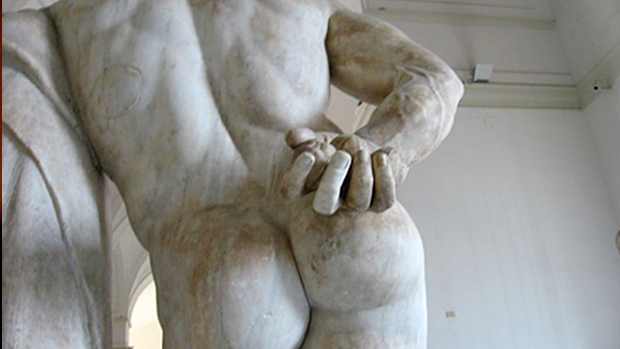The Case For Sprinting
Sprinting can be a powerful body recomposition tool, but many lifters shy away from it. That's a shame, because it burns fat, spares muscle, and improves cardiorespiratory efficiency without requiring a huge investment of time.
The thing is, if you're like a lot of lifters, you may have avoided sprints out of fear of injury. A pulled hammy will definitely derail hard earned progress in the gym. There are many reasons sprinting can lead to hamstring injury, including improper warm-up and overdoing it on volume and/or intensity, but that's a topic for another day.
Researchers have studied hamstring injury and hamstring injury prevention. Turns out, most hamstring strain injuries occur at the end of the swing phase of a stride as the hamstrings contract eccentrically to decelerate the forward movement of the leg. At top speed, the force required can be quite significant and overwhelm the eccentric strength of the hamstring muscles.
Eccentric hamstring work. Studies have shown that building up the eccentric strength of the hamstrings reduces the incidence of hamstring strain during high-speed running.
Since we're much stronger on the eccentric (lowering) phase of a lift than we are on the concentric (lifting) phase, the development of eccentric strength is actually limited by our concentric strength. In order to develop the eccentric strength needed to protect us from hamstring strains, we need techniques that accentuate the eccentric part of the movement. These three exercises will allow you to do just that.
1. Accentuated Eccentric Glute-Ham Raise
The glute-ham raise (GHR) is a seemingly magical piece of equipment that's rare in gyms and is underused in the gyms that actually have one. A simple shift of arm position, as shown in the video, will allow you to overload the eccentric.
Hands at your sides is relatively easy. Hands crossed at the chest adds to the demand. In the third rep, arms extended overhead overloads the eccentric, then the concentric is made easier by putting the arms back to the sides.
If you're strong on GHRs, you can hold a load (plate, kettlebell or dumbbell) at the chest to accentuate the eccentric, then drop it to get back up (a partner will need to give it back to you for the next rep).
In any case, make sure that the eccentric is overloaded compared to the concentric to bulletproof your hams. Shoot for three sets of 8-10 reps. Fewer just won't build eccentric hamstring strength as effectively.
2. Nordic Ham Curls
It's like a cousin to the glute-ham raise, but it requires no equipment. You can do it just about anywhere. To emphasize the hams, do the eccentric slowly and with control, then just push yourself back up. You can play around with arm position to increase the demand. Three sets of 8-10 is about right.
3. Two-Up, One-Down Leg Curls
Lift the weight with a two-legged concentric, then lower the weight under complete control with just one leg. Alternating legs, do three sets of 16-20 reps with as much weight as you can properly handle.
If you want to add sprinting to your training program, start by building up the eccentric strength of your hamstrings. Beginning at least six weeks before you plan to start sprinting, program two-up one-down leg curls and either the accentuated eccentric GHR or the Nordic ham curl at least twice a week. If you're already sprinting, you should still add these exercises to your program as a preventative tool.
- Arason A, Andersen TE, Holme I, et al. Prevention of hamstring strains in elite soccer: An intervention study. Scand J Med Sci 2008; 18: 40–48.
- Askling, C., Karlsson, J. and Thorstensson, A. (2003), Hamstring injury occurrence in elite soccer players after preseason strength training with eccentric overload. Scandinavian Journal of Medicine & Science in Sports, 13: 244–250.
- Brooks JH, Fuller CW, Kemp SP, et al. Incidence, risk, and prevention of hamstring muscle injuries in professional rugby union. Am J Sports Med 2006; 34: 1297–1306.
- Brukner P. Hamstring injuries: prevention and treatment–an update
- Br J Sports Med Published Online First: 23 June 2015.
- Petersen J, Thorborg K, Bachmann M, et al. Preventive Effect of Eccentric Training on Acute Hamstring Injuries in Men's Soccer: A cluster-Randomized Controlled Trial. Am J Sports Med 2011; 39: 2296–2303.
- Sayers, A. & Sayers, B-E. The Nordic Eccentric Hamstring Exercise for Injury Prevention in Soccer Players. Strength & Conditioning Journal. August 2008: 30 (4), 56-58.
- Schmitt, B., Tim, T. & McHugh, M. Hamstring Injury Rehabilitation and Prevention of Reinjury using Lengthened State Eccentric Training: A New Concept. Int J Sports Phys Ther. 2012 Jun; 7(3): 333–341.





